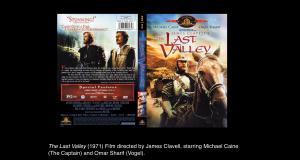1. Peter Hagendorf’s Diary Excerpt (1631)
This piece of text was written by Peter Hagendorf who was a mercenary who participated in The Siege of Magdeburg. The diary is in first person with Hagendorf narrating his point of view of being an active participant in the 30 Years War. Since this text was not a summary or overview of the war but rather the perspective of a single soldier and the obstacles he had to overcome it’s more easily relatable. This passage shows us that wars are not always about the the two sides that are fighting with each other but it’s also about the individuals fighting in the war. We learn that mercenaries employed in the war bring along their family with them in their journey. When Hagendorf was shot through the stomach he showed great concern for his wife who “went into the city, even though it was completely on fire, since she wished to fetch a cushion and cloth for me to lie on…” One of the strategies used in this passage was the use of the informal writing style. Short excerpts and diary entries were not really edited and revised. Therefore the content was authentic and easier to empathize with due to the fact that what this mercenary wrote wasn’t premeditated but rather the true accounts of the war. This primary account of the Siege of Magdeburg that showed history from below, true account not from the side that won but from a single soldier who experience first hand what happened in The Siege of Magdeburg.
2. Otto von Guericke, Fragment
This eyewitness account was written in Germany in 1860 by Magdeburg Mayor Otto von Guericke. A historical summary is provided in the beginning explaining some of the details of the war before Guericke’s narration of The Siege of Magdeburg is presented. The summary in the beginning of the passage is definitely an example of history from above, because it was written focusing on the events relative to the two warring sides as a whole; not focusing on the lives of ordinary people. Unlike Peter Hagendorf’s Diary Excerpt, the mayor Guericke experienced the horror of the events from inside the walls of Magderburg. The events that took place are narrated in a well thought out manner. Each paragraph follows a simple paradigm leading to the conclusion that the city of Magdeburg was in tatters when the enemy soldiers came. We learn in this excerpt that many innocent people were killed that “the number of those murdered and killed within the city cannot be known with any certainty…” This text is a portrayal of history from above because it did not focus the lives of ordinary people, it focused on mainly on the destruction of Magdeburg and its people. The mayor described scenarios were soldiers came into a person’s house they would take all of that persons valuables in exchanged for his life and his household “until another came along to take whatever he had.” This passage focused mainly on the deaths of the citizens of Magdeburg and the horrors that laid waste to Mayor Otto von Guericke’s city.
3. B. Brecht, Mother Courage, Scene 5
In Scene 5 of Mother Courage we see Mother Courage at a very low point in her life. At this point in the story she had just lost her son and is trying her best to hold on tight to what she has left, her wagon. This passage is history from below because it follows an ordinary woman, Mother Courage, as she makes her way through the Thirty Years War. In this scene in the book portrays the idea that the Thirty Years War was brutal to not only soldiers but the ordinary people as well. I liked what Mother Courage says to the second soldier:”I don’t need to hear about it, I can see they’ve had a victory. I’ve had only losses from your victory.” She makes a clear point that emphasizes the toll of the war on regular people. And war does not only hit the side that lost, they hit everyone and anybody can be affected. For example when the Second Soldier explains that that the farmers who were hit were Catholics like himself, the First Soldier replies, “That’s the trouble with artillery shells, they’re indiscriminate.” The artillery shells are a metaphor for war, in a sense that the destruction of war can affect anyone.
4. J. P. Abelin’s Engraving, The Sack of Magdeburg

This is a hand-colored engraving by Johann Philipp Abelin (1659). This engraving shows the imperial troops conquering the redoubt (temporary fort) and the suburbs in April 1631. As you can see in the picture provided above there are many soldiers on horseback lined up gearing up for the the city. This image is a representation of history from above. The Siege of Magdeburg wasn’t as organized at it is represented in the picture above. There were accounts of violence, rape, blundering, fire, and much more. In the image it shows soldiers filed in order with their flags held up high while the city in the background is looking bright and visible. This image is history from above because it is glorifying the events that occurred at Magdeburg. It’s history from above because it is showing soldiers and what they are accomplishing in the city. We see the backs of soldiers and not really their faces so it’s hard to form an emotional connection with the picture. We are not being pulled in by the image, so that we can only admire what’s happening from a distance.
5. J. Clavell’s Film, The Last Valley

The Last Valley is a film from 1971 that was directed by James Clavell. In the right hand side of the dvd cover we see